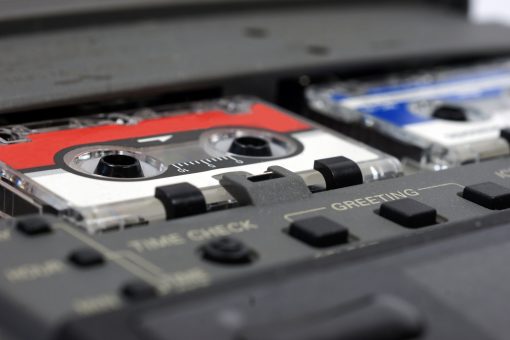University Transcriptions regularly undertakes focus group transcription work on behalf of a range of clients from universities through to marketing companies. The quality of recording for these clients can range from those who have stuck a recorder in the corner of the room and hoped it would pick everybody up clearly, to those who mic the room up carefully and use specialist software and equipment. Our Top 8 Tips for setting up the room for a recording of a focus group are as follows:
- Make sure the room is not too big for the group. It is particularly relevant in a room that does not have any acoustic padding or dampening, for example a dining hall or restaurant space. A large hall with six people in and no sound proofing is going to be very echoey and make it hard for the transcriber to pick up the spoken word clearly.
- Do not put the recorder close to one person and not any of the others if everybody is expected to speak equally, or contribute regularly to the recording. A common problem for transcribers is that one person will be very clear and others will not because the recording device has been placed next to them. Try to seat everybody in a circle with the recording device in the middle, pointing at no-one in particular.
- The recording device should be of fairly good quality. We recommend the Olympus products for digital recording because they are inexpensive and the digital files are easy to manipulate. You can pick up a reasonably priced Olympus digital dictation machine on eBay for around £40 to £60. Try to go for one with the prefix DS. Similarly the Apple iPhones are absolutely amazing and will work extremely well for focus groups if placed flat in the middle of the room (other smart phones are available). It is not as easy to work with the audio files on smart phones as it is on a digital recorder, but they do work well at picking up sounds and recording the focus group accurately.
- Speak to the participants of the focus group at the start of the recording and ensure that you have firstly obtained their permission to record the group, but also explain to them that a transcriber is going to be typing out everything they say. Tell them to try to speak clearly and concisely. Explain that the transcriber will not want to be typing lots of hesitations and erm’s, so to keep their answers as specific as possible. Tell them not to speak over the top of each other.
- Start the recording at the point you want the transcriber to begin typing. This will save you a bit of money and it can be amazing how many minutes at the start of the recording can be spent not talking about the things you want transcribing. Explain and introduce everything first, and only once all of this is done and the focus group is going to start, press record on the device.
- Check the device halfway through your recording to make sure it is picking up well. It can be worth stopping after a couple of minutes and rewinding slightly just to make sure that the recording sounds clear when you play it back. However I would strongly recommend stopping anyway halfway through to make sure that the recording is clear enough to be transcribed. We have had a couple of nightmares over the years where a university has recorded a focus group and got it ready for processing, only to discover that the digital recorder has not picked up the participants and the transcription is not able to be completed.
- Think about the number of people that you want in the focus group. Most transcription companies charge per group of participants, so for example it can be much more expensive to record a group of ten people than it can to record a group of six people. If you do not need the extra four people it can be worth trying to restrict your numbers.
- When sending the focus group to the transcription company, try to use a server that offers SSL secure uploads. Also ensure that the recording is in a compressed format. Some formats, such as WAV and WMA use a lot of space and can fill up your hard drive as well as the server you are uploading to. Ensure that your upload is in compliance with the data protection policies of your university or company, and ensure that you have a confidentiality undertaking signed by the transcription company you are using. UniversityTranscriptions.co.uk is a listed preferred supplier to a large proportion of UK universities and is quite happy to sign confidentiality undertakings and provide a copy of its GDPR compliant data protection policy. It is also a registered data controller under the Data Protection Act and logs with the Information Commissioner’s Office.









